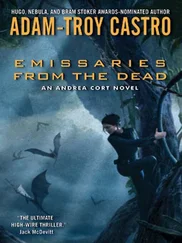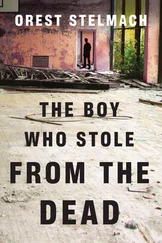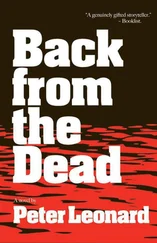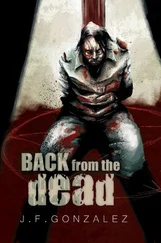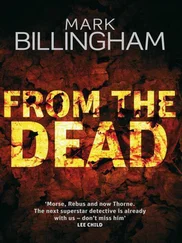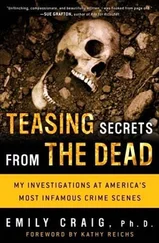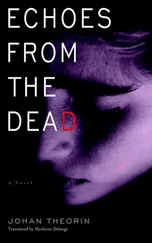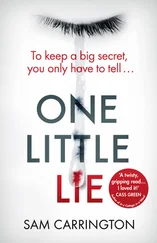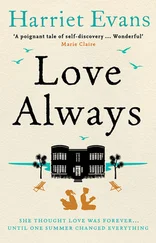
Of course, the toughest problem in identifying human remains is also the simplest: Where do you start? According to Kym Pasqualini, the founder and coordinator of the NMCO, the number of reported missing adults topped 43,000 in March 2003. When you add the number of missing children to the list, the total comes to a staggering 97,297.
Those numbers are daunting enough when you've got a victim with an unusual biological profile or a special piece of surgical hardware whose serial number might somehow be traced. But what about the thousands of victims who basically resemble thousands of others?
Such was the problem with the Jane Doe in Baraboo, Wisconsin, the one whose facial reconstruction I described in the prologue to this book. This was the young woman whose body parts had been butchered and flayed and carefully wrapped in grocery bags, which someone had then thrown into the Wisconsin River. Since months of searching for her by conventional means had failed, Sauk County Detective Joe Welsch and Wisconsin Special Agent Elizabeth Feagles had come to me, hoping I could do a facial reconstruction on her skull.
By the time I became involved with the case, forensic scientists in Wisconsin had already done a complete analysis of the remains, determining that the young woman so brutally butchered had been a young Black female, about twenty to twenty-five years old, probably about 5'2'' and weighing 120-130 pounds. Wisconsin fingerprint expert Mike Riddle had even managed to lift prints from her decomposed hand-an almost superhuman feat that left me awestruck.
But all this science hadn't gotten them very far. According to the NCIC database, more than 1,500 women who fit that profile had been reported missing since early that summer. Getting the prints was terrific-but where could they find a match? Most people who aren't criminals don't have their fingerprints on file. If Joe and Liz had had any idea where to look, they could have tried to lift prints from one of the young woman's possessions. But until they had some idea of who their victim was, they were stuck.
Like so many other unidentified victims, the Baraboo Jane Doe was so frustratingly ordinary. Her teeth were perfect, with no restorations. She had no tattoos or scars and no evidence of previously broken bones. The D.A. hoped that her skull would hold some critical forensic evidence-some cut marks that might someday be matched to a weapon. That was why we were using the rapid prototyping technology to create a perfect replica of her skull. But so far the skull itself had yielded far too little information about this woman's identity.
When Liz and Joe came to me, I was their last resort. They hoped desperately that my facial reconstruction would give them a visual image that they could circulate throughout the state. If all went as we intended-and we all knew that it might not-someone would see the image I created, recognize the victim, and come forward.
So as I began my facial reconstruction that Labor Day weekend, I knew the stakes were frighteningly high. Until the police knew who Jane Doe was, they would never find her killer. If a serial killer was out there somewhere, we had given him virtual license to try again. If the killer were someone more ordinary-a boyfriend, spouse, relative, or friend-he might literally get away with murder, and a particularly brutal murder at that. There was one last chance to keep that from happening-and it was all up to me.
I tried to keep the image of this woman's mutilated flesh out of my mind and concentrate on the skeletal details. Although it was unusual to be starting with a laminated paper skull rather than one made of human bone, everything else about this reconstruction was perfectly ordinary-just like the victim. As always, I began by cutting tissue markers-small sections of rubber that mark the depth of tissue in various parts of the victim's face. I make my markers from the standard pink erasers that go into mechanical pencils-long thin tubes of rubber that I buy at the office supply store and cut to size with an ordinary X-Acto knife.
The length and positioning of these markers is based on standard anthropological formulas that tell me how deep the flesh is likely to be on a person's cheeks, forehead, chin, and elsewhere, based on his or her sex, race, and estimated weight. Carefully following these formulas, I glue close to two dozen markers at specific points all over the skull, in the middle of forehead, the bridge of the nose, the point of the chin, and other key places. Then I connect them with clay, using the bone structure as my guide.
The most tedious part of the job comes right at the beginning. Cutting the markers to the right length and placing each one in its precise position is a painstaking task made all the more stressful by my awareness that the slightest mistake might compromise the accuracy of my final result. Some of those little rubber cylinders are no more than an eighth of an inch long, so as I worked on the Baraboo case that Labor Day weekend, I needed a sharp knife and a steady hand. Soon, however, I became absorbed in the soothing-if somewhat boring-mechanics of cutting the twenty-three markers, numbering each one of them with a sharp pencil, and laying them all out in numerical order. After about an hour, I was ready to go back to the skull.
I'd already mounted the laminated prototype on a converted camera tripod, which I'd fitted with a big eyebolt that fit up inside the spinal cord opening known as the foramen magnum. My tripod has a large ball joint at its base, which allows me to rotate and tilt the skull until it is perfectly level, a position known as the Frankfurt horizontal. In this position, the eye sockets appear to be aimed straight ahead and I can draw an imaginary level line from the bottom of the eye orbit to the ear hole known as the external auditory meatus. I grabbed the small carpenter's level that I use for this task and centered it over the bottom of the prototype's eye orbits.
Then I reached for the mandible, which the Milwaukee team had also made out of laminated paper, and fit it into sockets located just in front of the ears, the temporomandibular joint. I fiddled with the paper jaw until it fit perfectly, opening and closing in a smooth gliding motion so that the teeth of the upper and lower jaw fit together in normal occlusion. I didn't want my statue gritting her teeth-she'd be harder to recognize that way-so I put a small plastic strut betwen her upper and lower teeth for that tiny bit of separation that creates a more natural look. Then I adjusted the mandible until I had created a slight bit of distance between it and the skull, to mimic the normal separation created by the articular cartilage and a small fibrous disk called a meniscus. I knew that each tiny detail might make the difference between a face that someone might recognize and one that looked just slightly “off.”
If my Jane Doe had had unusual teeth, they might have helped someone recognize her, so I would have had her bare those striking teeth in a smile-a complicated procedure that would have required still more manipulation of the jaw, since when a person smiles, the jaw drops and pulls back a little. Then, when I added the clay, I'd have had to make the statue's nostrils flare a bit, crunch up the flesh under her eyes, and flatten the flesh across her upper teeth to almost nothing-subtle but crucial touches that could make a huge difference in the final product.
Luckily, I didn't have to do that here-this woman's mouth would be closed. The replica's teeth were perfectly shaped and placed, but they were coated with the same honey-brown resin that covered the rest of the skull, which would hardly give a natural look to the final result. Besides, there was nothing unusual about the woman's teeth, so once her mandible was seated correctly, I started gluing on the tissue markers.
Читать дальше


